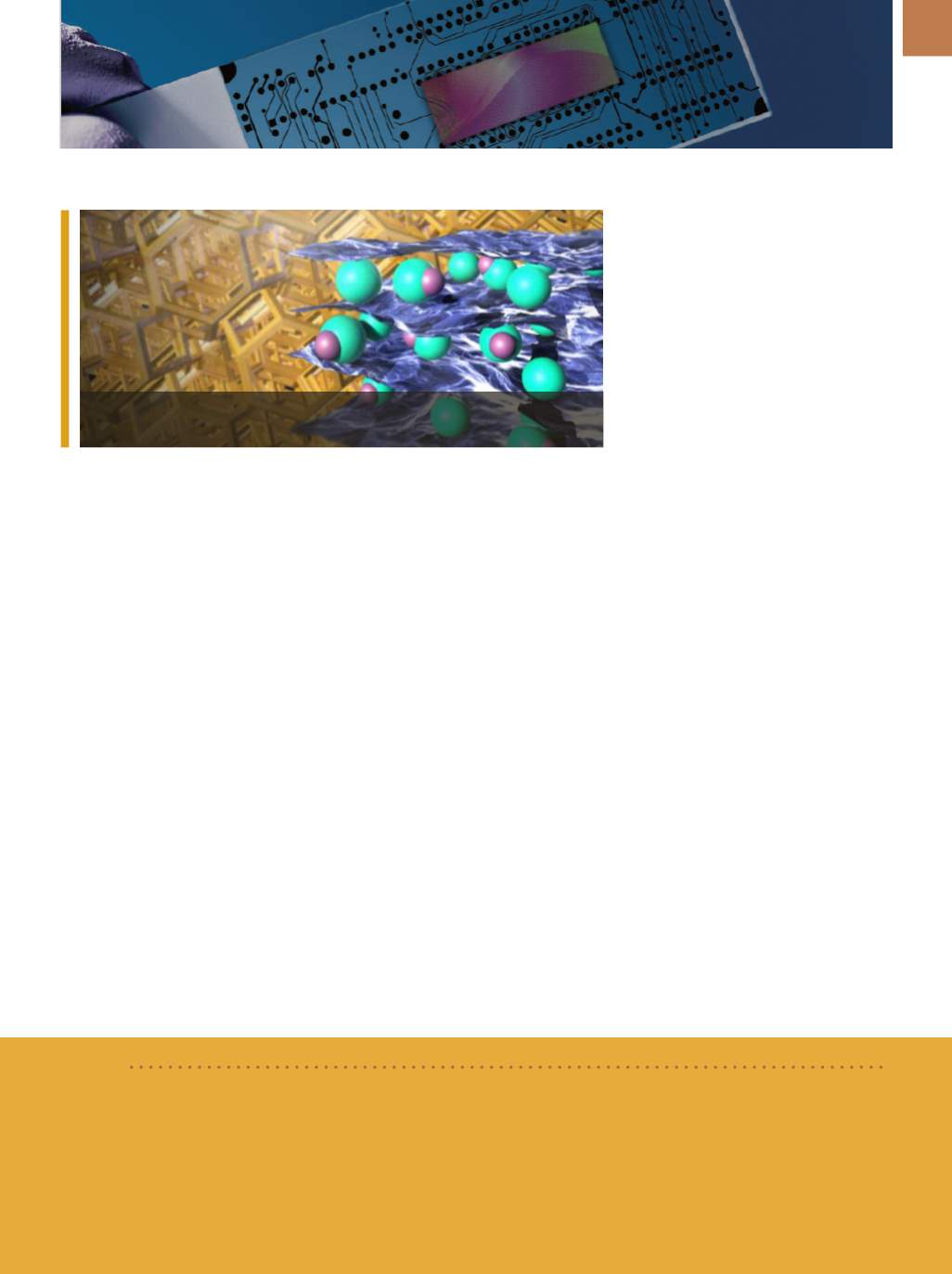

A D V A N C E D
M A T E R I A L S
&
P R O C E S S E S |
S E P T E M B E R
2 0 1 6
1 5
BRIEFS
Aleris, Cleveland, offers a new 7017 aluminum alloy in North America for commercial plate and defense
uses. After extensive review and testing, the U.S. Army Research Lab issued MIL-DTL-32505 for use in armor
applications. 7017 offers high strength, good weldability, and corrosion resistance. It is currently used in
Europe and Asia on combat vehicles to achieve superior ballistic protection.
aleris.com.
BOOSTING PERFORMANCE
OF 3D-PRINTED GRAPHENE
AEROGEL SUPERCAPACITORS
Researchers from Lawrence Liver-
more National Laboratory (LLNL), Calif.,
along with a team from the University
of California, Santa Cruz devised a
method to double the performance of
3D-printed graphene-based superca-
pacitors. The procedure, which involves
sandwiching lithium ion and perchlo-
rate ion between layers of graphene
in aerogel electrodes, substantially
improves the capacity of the electrodes
while maintaining the devices’ excel-
lent rate capability.
“This is a unique process that sig-
nificantly raises the performance of
previous graphene aerogel supercapac-
itors,” says LLNL engineer Cheng Zhu.
“We’ve modified the devices and found
the best recipe.” The technique involves
two ion-intercalation steps, followed by
hydrolysis of perchlorate ion intercala-
tion compounds.
“This two-step electrochemical
process increases the surface area of
graphene-based materials for charge
storage, as well as the number of
pseudo-capacitive sites that con-
tribute additional storage capacity,”
says Zhu. “In the future, I think every
device will be customized, so you need
the unique architecture or shape (for
the supercapacitor),” he says. “If
you can 3D print it, you can make
any shape you want. Everyone could
design their own iPhone.”
For more
information: Cheng Zhu, zhu6@llnl.
gov,
www.llnl.gov.
NANOMATERIALS ENHANCE
WINDOW EFFICIENCY
Researchers at the U.S. Depart-
ment of Energy’s Argonne National Lab-
oratory, Ill., are using nanomaterials to
improve the energy efficiency of exist-
ing single-pane windows in commercial
and residential buildings. The teamwas
recently awarded a $3.1 million grant
fromDOE’s Advanced Research Projects
BRIEF
Malvern Instruments,
UK, release an automated an lyzer that uses dynamic light scattering to measure th siz of
nanoparticles in suspen ions and mulsions. The Z tasizer AT provides timely and reliable data that enable tracking
of processes in the sub-mi ron ize range, uch as mulsification, dispersion, milling and homogenizatio , whil at
the same time eliminating the elays and inefficiencies associated with manual analysis.
malvern.com.
Researchers sandwich lithium ion and perchlorate ion between layers of graphene,
substantially improving 3D-printed aerogel supercapacitor performance.
Agency-Energy (ARPA-E) to develop
a technology that could achieve that
goal.
The nanofoam the team is devel-
oping—a nanocellular composite with
super thermal insulation and sound-
proofing—uses gas bubbles less than
100 nm in diameter to block the trans-
fer of heat and sound through glass
windows while allowing visible light
to pass through and maintain a clar-
ity similar to normal windows. “That’s
really the trick, blocking the heat and
sound transfer while maintaining
transparency,” says Ralph Muehleisen,
principal building scientist. “It’s fairly
simple to develop a coating that insu-
lates, but getting one that is thin and
you can still see through is a substan-
tial technical challenge.”
The nanofoam, which will be
extruded into sheets about 3 mm
thick, thermally insulates by using tiny
bubbles to reduce collisions among
gas molecules, thereby reducing heat
energy transfer. When bubbles are
reduced to that scale, super thermal
insulation becomes possible. Accord-
ing to ARPA-E, single-pane windows
make up 30-40% of windows in the
U.S., depending on the region. Sin-
gle-pane windows conduct at least
twice as much heat as double paned,
so retrofitting all those windows could
save about $12 billion a year in energy
costs.
For more information: Ralph Mue-
hleisen,
rmuehleisen@anl.gov, www.
anl.gov.
NANOTECHNOLOGY


















